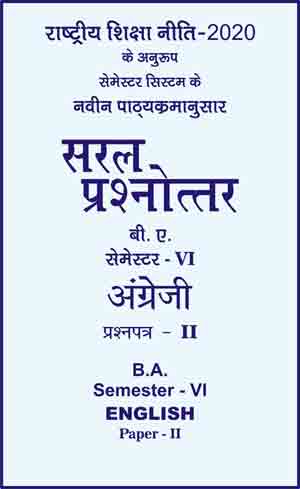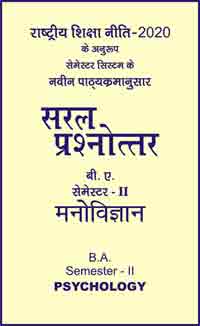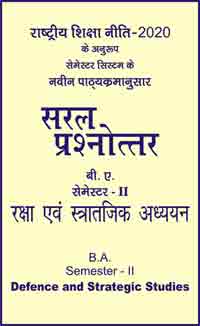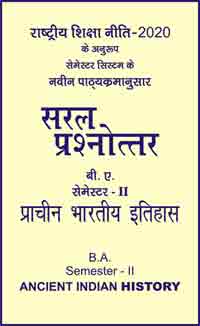|
बी ए - एम ए >> बीए सेमेस्टर 6 अंग्रेजी पेपर 2 बीए सेमेस्टर 6 अंग्रेजी पेपर 2सरल प्रश्नोत्तर समूह
|
5 पाठक हैं |
||||||
बीए सेमेस्टर 6 अंग्रेजी पेपर 2
Chapter 1 - Media and Society
Introduction to the Chapter
The interdependence between society and the media is deeply rooted and reciprocal. While society has existed for millennia, mass media has only emerged over the last hundred-plus years; however, both are fundamentally reliant on one another. The evolution and well-being of society are contingent upon a robust communication system that not only disseminates information but also provides education and entertainment. This section will examine critical aspects concerning the interaction of media with society, including the nature of audiences, the importance of media literacy, and the development of media policies. Such scrutiny is paramount in an era where media, particularly news outlets, have assumed a pivotal role in influencing governmental policy and holding those in power accountable, serving as democracy’s sentinel. The expectation is that new media will champion public causes, voice collective opinions, and initiate important societal debates. As the news media’s presence has become ubiquitous, opinions about its influence vary widely, ranging from views of its immense power to skepticism about its impact on people’s daily lives. Nonetheless, the reality remains that media is now an integral component of the average person’s everyday experience.
Media operates as a social entity, drawing its very essence from the society it inhabits, being inseparable from it.
Defining Society and Mass Media
A society is essentially a collective of individuals who share a geographic area, bound by common practices, legal systems, and organizational structures. Societies are characterized either as homogeneous, where there is a commonality of values, language, religious beliefs, and ethnicity like the societies of Japan, China, Native Americans, and the Zulus or as heterogeneous, like the United States, marked by a rich tapestry of different races, cultures, and religions, with English serving as a lingua franca.
Communication serves as the fundamental connective thread within the strata of a society. The advent of mass media has mirrored society within its news and entertainment content. On a granular level, media exposure educates us about societal divisions based on caste, tradition, religion, or creed, whether through direct social interaction or media narratives. In media discourse, for example in India, it is commonplace to see discussions on electoral behaviors influenced by caste as well as media coverage of demonstrations by various caste groups striving for reservations in government employment and educational institutions.
The agitations by the Jat community in 2016 within Haryana and the Gujjar protests in 2019 across Rajasthan serve as stark examples of how media coverage reflects societal actions and their consequences, with the former resulting in significant damage to public assets and the latter leading to widespread disruption in railway services. Further illustrating media’s role in societal segmentation, mainstream newspapers often categorize matrimonial advertisements by gender and caste. These instances exemplify media’s role not only in reporting on societal occurrences but also in perpetuating existing social structures. Given that media professionals are products of the society they represent, it’s inevitable that their personal biases seep into their reporting and perspectives.
Historical Context
Before the advent of contemporary mass media, the spread of ideas and information relied on public gatherings, personal communications, and even inscriptions. An enduring example from history is the dissemination of Buddhism by Emperor Ashoka, who used inscribed pillars to spread the teachings far and wide, a method of communication that stands resilient even today.
The concept of mass media, as understood in the modern sense, took shape roughly a century ago with the rise of the Penny Press, making newspapers widely affordable. World War I exemplified the media’s burgeoning power as press and radio were harnessed to galvanize national support for the war efforts. By the 1920s, the belief in the media’s influence over the masses and international opinion was firmly established.
The interwar period and the subsequent experiences of Nazi Germany and the Soviet Union highlighted the capacity of media to serve as a potent propaganda tool for those in power. The Nazi regime’s manipulation of media underscored the dangerous potential of repeated falsehoods in shaping public perception.
Post-World War II, the expansion of media had a profound impact on all aspects of life, including its recognized role in the development of societies around the globe. Media’s aggressive pursuit of news, balanced by its critical role as a watchdog in democratic societies, ensures that governments remain transparent and accountable. This is rooted in the belief that the media is the voice of the people, safeguarded by freedoms of speech and the press.
Instances of media censorship, such as during the Emergency in India from 1975 to 1977, demonstrate the media’s symbolic resistance to government overreach, with notable examples like ‘The Indian Express’ leaving editorial spaces blank as a protest against censorship a poignant act that was emulated by others and remains a powerful image of the media’s struggle against suppression.
In the current age of globalization, the role and impact of mass media have significantly evolved. It is often contended that news media has transformed into a mere commercial product, attracting criticism for its portrayal of explicit violence. From a leftist perspective, the media is viewed as a mechanism that caters to the socio-economic and political agenda of the ruling elite.
Stanley J. Baran, in his book “Introduction to Mass Communication: Media Literacy and Culture,” references media theorist Marshall McLuhan’s analogy to elucidate the pervasive nature of mass media. McLuhan likened people’s awareness of media’s omnipresence in their lives to a fish’s recognition of water; it’s so integral to its existence that it goes unnoticed until it is absent. In this way, individuals are often unaware of the media’s constant influence. Caren J. Deming and Samuel L. Becker, in their work “Media in Society,” assert the critical role media plays in our daily lives, suggesting that its operations are too integral to be ignored. They highlight media as a formidable force in democracy, often considered its fourth pillar, holding a unique position of power within society.
Media scholars Fred S. Siebert, Theodore Peterson, and Wilbur Schramm in “Four Theories of the Press” argue that the press inevitably reflects the social and political milieu it operates within. Expanding on this, communication experts Daniel C. Hallin and Paolo Mancini in “Comparing Media Systems: Three Models of Media and Politics,” contend that to fully comprehend the workings of news media, one must consider the broader spectrum of societal elements such as the state’s nature, political party systems, the interplay of economic and political interests, and the progress of civil society. These factors are seen as critical in shaping the media’s function and its relationship with the audience.
|
|||||













